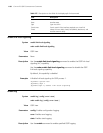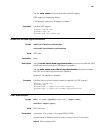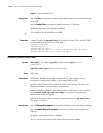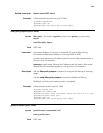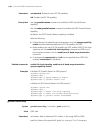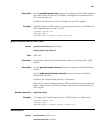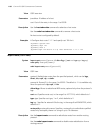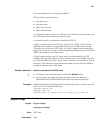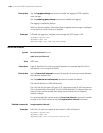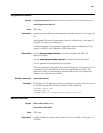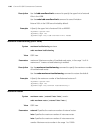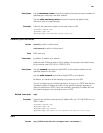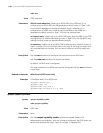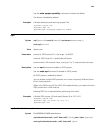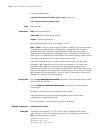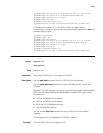
1138 CHAPTER 76: OSPF CONFIGURATION COMMANDS
Description Use the log-peer-change command to enable the logging of OSPF neighbor
state changes.
Use the
undo log-peer-change command to disable the logging.
The logging is enabled by default.
With this feature enabled, information about neighbor state changes is displayed
on the terminal until the feature is disabled.
Examples # Disable the logging of neighbor state changes for OSPF process 100.
<Sysname> system-view
[Sysname] ospf 100
[Sysname-ospf-100] undo log-peer-change
lsa-arrival-interval
Syntax lsa-arrival-interval interval
undo lsa-arrival-interval
View OSPF view
Parameters interval: Specifies the minimum interval between two received identical LSAs in
milliseconds, in the range 0 to 60000.
Description Use the
lsa-arrival-interval command to specify the minimum interval between
two identical received LSAs.
Use the
undo lsa-arrival-interval command to restore the default.
The interval defaults to 1000 milliseconds.
If an LSA that has the same LSA type, LS ID, originating router ID with the previous
LSA is received within the interval, the LSA will be discarded. This feature helps you
protect routers and bandwidth from being over-consumed due to frequent
network changes.
It is recommended the interval set by the lsa-arrival-interval command is smaller
or equal to the initial interval set by the lsa-generation-interval command.
Related commands: lsa-generation-interval.
Examples # Set the LSA minimum repeat arrival interval to 200 milliseconds.
<Sysname> system-view
[Sysname] ospf 100
[Sysname-ospf-100] lsa-arrival-interval 200



